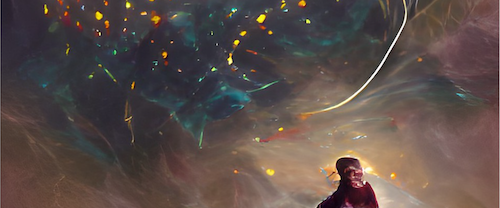Speaker
Description
Anisotropic subhalo accretion through cosmic filaments has an impact on halo structures. Using high-resolution cosmological simulations, we quantify the strength of filamentary subhalo accretion on host haloes and show that, for the first time, the shape and orientation of host haloes weakly correlate with the strength of filamentary subhalo accretion even if the host halo masses are the same. Minor-to-major axis ratios of host haloes tend to decrease as their filamentary accretion gets stronger. Haloes with highly anisotropic accretion become more prolate or triaxial. For host haloes with strong filamentary accretion, their major axes are preferentially aligned with the filaments, while their angular momentum tends to be slightly more misaligned. (https://ui.adsabs.harvard.edu/abs/2020MNRAS.495..502M/)

